Mona Strader Bismarck Collection
By Rebecca S. Rice
Special Collections Assistant
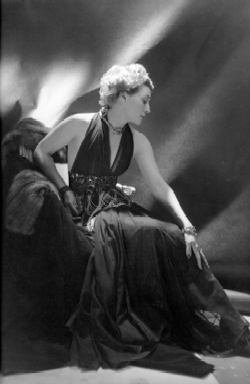 Countess Mona Bismarck, one of the leading lights of international cafe society, was born
in Louisville in 1897 and raised in Lexington. Eventually marrying five times, Mona’s marriages propelled her
upwards in society and she reached its pinnacle with her third marriage to Harrison Williams, who was known as the
richest man in America.
Countess Mona Bismarck, one of the leading lights of international cafe society, was born
in Louisville in 1897 and raised in Lexington. Eventually marrying five times, Mona’s marriages propelled her
upwards in society and she reached its pinnacle with her third marriage to Harrison Williams, who was known as the
richest man in America.
Famous for her beauty, particularly her trademark silver hair and aquamarine eyes, as well as her fashion sense, Mona was the first American to be declared the Best-Dressed Woman in the World in 1933, a distinction bestowed upon her by Paris designers Chanel, Mainbocher, Lanvin, Vionnet, Molyneaux, Lelong and Mona’s personal favorite, Balenciaga. Upon the closing of Balenciaga’s fashion house in 1968, it was said that Mona took to her bed for three days in despair. She regularly appeared on best-dressed lists on both sides of the Atlantic. Her circle of famous and influential friends included European nobility, politicians, artists, designers, actors, writers and more. Her homes, clothes and lifestyle were regularly chronicled in newspapers and magazines, especially Vogue. Salvador Dali painted her portrait. Cole Porter included her name in song lyrics. She was mentioned in movies and alluded to in books. She was photographed by famous photographers of the day, including Steichen, Horst and her close friend, Cecil Beaton, who was devoted to Mona.
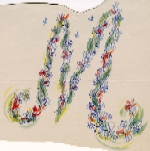 As sparkling as her life became, Mona Bismarck’s childhood was marked by the divorce
of her parents in 1902. Mona and her brother, Robert, eventually lived with their paternal grandmother while
their father, Robert Sims Strader, established himself in the horse industry. He eventually purchased
Forkland Farm near Lexington. Her first husband, Harry Schlesinger, was 18 years older than Mona when
they married in 1917. Schlesinger owned Fairland Farm in Lexington and was the son of a wealthy
Wisconsin businessman. The couple divided their time between Milwaukee, Wis., and Fairland before divorcing in
1920. Mona eventually moved to New York and remarried in 1921. She had met her second husband, James Irving
Bush, a banker who was also from Wisconsin, while married to Harry Schlesinger. Bush was 14 years older
than Mona and was reputed to be one of the handsomest men in the country. However, their marriage quickly foundered,
and Mona obtained a divorce in Paris in 1924.
As sparkling as her life became, Mona Bismarck’s childhood was marked by the divorce
of her parents in 1902. Mona and her brother, Robert, eventually lived with their paternal grandmother while
their father, Robert Sims Strader, established himself in the horse industry. He eventually purchased
Forkland Farm near Lexington. Her first husband, Harry Schlesinger, was 18 years older than Mona when
they married in 1917. Schlesinger owned Fairland Farm in Lexington and was the son of a wealthy
Wisconsin businessman. The couple divided their time between Milwaukee, Wis., and Fairland before divorcing in
1920. Mona eventually moved to New York and remarried in 1921. She had met her second husband, James Irving
Bush, a banker who was also from Wisconsin, while married to Harry Schlesinger. Bush was 14 years older
than Mona and was reputed to be one of the handsomest men in the country. However, their marriage quickly foundered,
and Mona obtained a divorce in Paris in 1924.
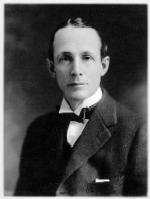 In 1926 Mona married multi-millionaire utilities executive Harrison Williams, who was 24 years her senior.
At the time of their marriage Williams was regarded as the richest man in America with a fortune estimated at $680 million.
Even after losing the vast majority of his assets in the stock market crash of 1929, Williams’s wealth and position
afforded Mona a lavish lifestyle. The couple owned two homes in New York, one in Palm Beach, a succession of apartments
in Paris, and Il Fortino, Mona’s beloved villa on the Italian island of Capri where she indulged in her love of gardening. In
order to overcome the dry climate of Capri, water from the mainland was delivered each day by boat.
In 1926 Mona married multi-millionaire utilities executive Harrison Williams, who was 24 years her senior.
At the time of their marriage Williams was regarded as the richest man in America with a fortune estimated at $680 million.
Even after losing the vast majority of his assets in the stock market crash of 1929, Williams’s wealth and position
afforded Mona a lavish lifestyle. The couple owned two homes in New York, one in Palm Beach, a succession of apartments
in Paris, and Il Fortino, Mona’s beloved villa on the Italian island of Capri where she indulged in her love of gardening. In
order to overcome the dry climate of Capri, water from the mainland was delivered each day by boat.
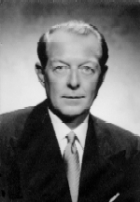 Williams died in 1953, and in 1955 Mona married her longtime friend, Count Edward von Bismarck, the
grandson of Chancellor Otto von Bismarck. Mona was widowed in 1970 and in 1971 married Bismarck’s physician, Umberto de
Martini, who was 14 years younger than she. It was only after his death in a car accident in 1979 that Mona
realized that de Martini married her for her money and position.
Williams died in 1953, and in 1955 Mona married her longtime friend, Count Edward von Bismarck, the
grandson of Chancellor Otto von Bismarck. Mona was widowed in 1970 and in 1971 married Bismarck’s physician, Umberto de
Martini, who was 14 years younger than she. It was only after his death in a car accident in 1979 that Mona
realized that de Martini married her for her money and position.
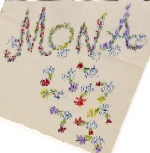 Countess Mona Bismarck died in Paris in 1983 and is buried on Long Island with
Harrison Williams and Edward von Bismarck. Her legacy is evident in the cultural and artistic programs and exhibits
sponsored by the Mona Bismarck Foundation in Paris. The Foundation, established by her estate, promotes
Franco-American cooperation through the arts.
Countess Mona Bismarck died in Paris in 1983 and is buried on Long Island with
Harrison Williams and Edward von Bismarck. Her legacy is evident in the cultural and artistic programs and exhibits
sponsored by the Mona Bismarck Foundation in Paris. The Foundation, established by her estate, promotes
Franco-American cooperation through the arts.
It was Mona’s interest in her native Kentucky that led her to donate her papers and photographs to The
Filson Historical Society in 1976. The Mona Strader Bismarck Papers span 1916-1994 and are primarily made up
of personal correspondence. Most of the letters were written by members of the social world in which Mona lived.
They include her close friends the Duchess of Windsor; Diana Vreeland; Gore Vidal; Randolph Churchill; Constantin
Alajalov, the cover illustrator for The New Yorker and The Saturday Evening Post; jewelry designer, Jean
Schlumberger; Hubert de Givenchy; and Cecil Beaton, among many others. 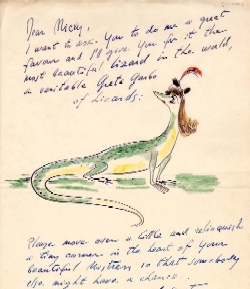 Alajalov’s correspondence is of particular interest because of the original
artwork he includes with it. He even penned and illustrated a letter to one of Mona’s favorite pet dogs, Micky.
One of Mona’s biggest passions was her love of small dogs, and she owned a succession of them throughout her
life. It is interesting to note that upon the death of Micky, she received almost as many sympathy notes as she did
after the death of her third husband, Harrison Williams.
Alajalov’s correspondence is of particular interest because of the original
artwork he includes with it. He even penned and illustrated a letter to one of Mona’s favorite pet dogs, Micky.
One of Mona’s biggest passions was her love of small dogs, and she owned a succession of them throughout her
life. It is interesting to note that upon the death of Micky, she received almost as many sympathy notes as she did
after the death of her third husband, Harrison Williams.
The letters provide an intimate look at international society and fashion, but they are also a valuable source for
descriptions of English and European attitudes and experiences pertaining to World War II and include observations
about life in France under the Vichy government, the French Army and conscientious objectors in England. Later
correspondence discusses anti-Gaullist politics in France. One of the more prolific writers in the collection is Bettina
Bergery, famous in her own right as Givenchy’s favorite “mannequin,” and wife of Gaston Bergery, who served as the Vichy government’s ambassador
to the U.S.S.R. and Turkey.  Bettina’s letters highlight life in Paris after World War II. The collection also
contains books about Cecil Beaton and Cristobal Balenciaga as well as a biography about Mona herself, published
by her foundation.
Bettina’s letters highlight life in Paris after World War II. The collection also
contains books about Cecil Beaton and Cristobal Balenciaga as well as a biography about Mona herself, published
by her foundation.
The Mona Strader Bismarck Photograph Collection spans the years of 1860 to 1979. The most beautiful images in the collection are Cecil Beaton’s portrait photographs of Mona. It also includes photographs of family, her husbands, and friends from her years in international society as well as snapshots of her garden on Capri and her apartment in the Hotel Lambert in Paris.
About |
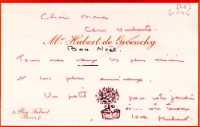
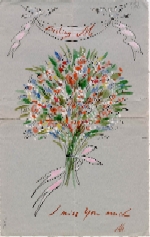
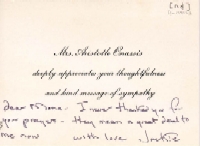
 Mona Bismarck was a beautiful and elegant woman known for her impeccable sense of style. She lived
a rarified existence of wealth and privilege, and through her papers and photograph collection we are allowed
a glimpse into what that life was like.
Mona Bismarck was a beautiful and elegant woman known for her impeccable sense of style. She lived
a rarified existence of wealth and privilege, and through her papers and photograph collection we are allowed
a glimpse into what that life was like.
Information about Mona Bismarck’s life was taken from the Mona Bismarck Collections at The Filson Historical Society as well as James D. Birchfield’s Kentucky Countess: Mona Bismarck in Art and Fashion.
The Filson Historical Society
1310 South Third Street - Louisville, KY
40208
Phone: (502) 635-5083 Fax: (502) 635-5086
Hours
The Ferguson Mansion and Office
Monday - Friday: 9 am. - 5 pm.
Saturday and Sunday closed
Library
Monday - Friday: 9 am. - 5 pm.
Saturday: 9 am. - 12 noon
